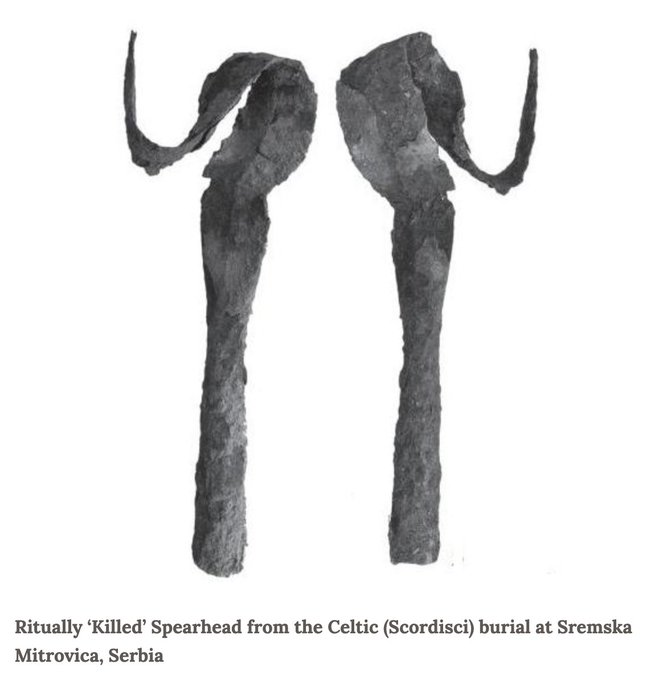This is the Church of the Đurđevi Stupovi Monastery in Berane, Montenegro.
It was built in 1213 as a memorial to the Serbian Prince Stefan Prvoslav, whose grave is in the nave...His grave slab is decorated with a very interesting symbol: triskele of Celtic Scordisci type.
The Scordisci were a Celtic Iron Age cultural group centered in the territory of present-day Serbia...From the 3rd c. BC until the 1st c. AD they ruled over a tribal state which at its zenith also included parts of Croatia, Bulgaria and Romania...
During the 3rd and 2nd c. BC they successfully fought Romans in the Balkans. You can read more about this on the Balkan Celts blog...
Lucius Annaeus Florus in his Epitome XXXVIIII (The Thracian War), says about them: "The cruelest of all the Thracians were the Scordisci...their haunts among the woods and mountains..."
They are the guys who lived in the fortress on Veliki Vetren peak on Mount Juhor, Central Serbia...
"14 horsemen came down from Devil's Town on Veliki Vetren peak, Serbia, on foggy nights and abducted young girls, croaking like Ravens" (Local legend). 14 sets of cavalry equipment were found in the Celtic opidium on Veliki Vetren peak 🙂
Where this button was found...With the identical triskele symbol...
From my post "Veliki Vetren"...
During the 1st c. BC their power begins to weaken and eventually they were crushed in 15 BC by Tiberius, and became Roman subjects, after which they started fighting for the Romans as mercenaries...
After the Roman conquest in the 1st century AD, their territories were included into the Roman provinces of Pannonia, Moesia and Dacia.
Strabo's Geographica (20 BC–23 AD) says that "the Major Scordisci, lived between moths of Sava and Morava rivers (Serbia)"...
So what happened to Scordisci after they became "Romans"? Well they stayed in the Balkans...And most likely became one of (many) Serbian ancestors...Look at Serbian genes...
Is this why Serbian Prince Stefan Prvoslav has a Scordisci triskele on his grave slab? Or maybe this is just a meaningless squiggle...
BTW, do you remember my post "Death of Prince Marko" about Celtic style "ritual killing" of weapons during warrior funerals, depicted in Medieval Serbian folk epic poems?
More about Scordisci can be found on this great site "Balkan Celts, Journal of Celtic Studies in Eastern Europe and Asia-Minor"
But I don't think you will find anything there about Serbian Prince Stefan Prvoslav's grave...
PS: By @LazarStojkovic
And let’s not forget this…
In “Red and White: Serbian-Celtic Parallels" (In Serbian), the late Serbian linguistic scholar, Celticist, and academician Professor Ranka Kuić identified ~600 words shared between Welsh and Serbian.
For comparison, that’s about 10x the number of words shared between the languages considered to be the members of the Finno-Ugric language group...












Hey, thanks for great insights as always! I was wondering if you plan any articles about the Minotaur? Search on this blog only shows me one post from 2019 with the word Minotaur...
ReplyDelete